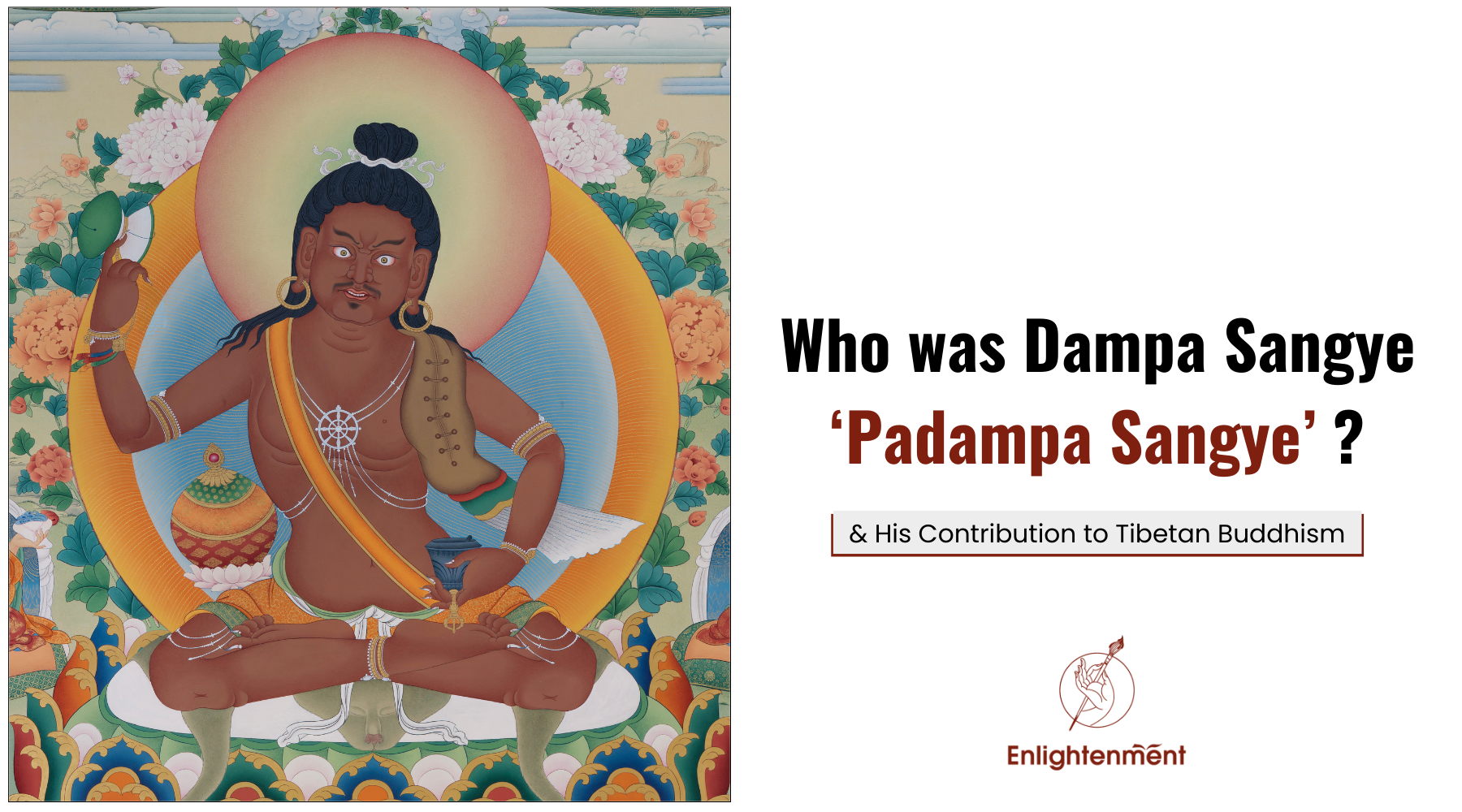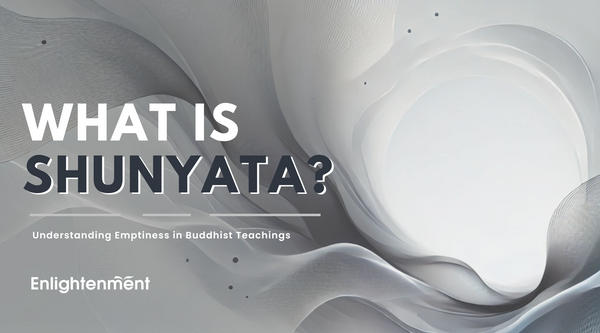Discovering Dampa Sangye: His Life, Teachings, and Legacy in Tibetan Buddhism
Dampa Sangye, also known as Padampa Sangye, stands as a deeply revered figure in the rich tapestry of Tibetan Buddhism. His teachings and practices have left an enduring legacy, shaping spiritual traditions across the Himalayan region and beyond. Often celebrated as a "traveling yogi" and a profound spiritual master, Dampa Sangye’s life was one of relentless pursuit of wisdom and compassion. His contributions are intricately fabricated into the cultural and religious fabric of Tibetan Buddhism, where his influence continues to inspire practitioners across generations. From his innovative approaches to meditation and compassion to the founding of unique traditions, Dampa Sangye's work transcends time and geography. In this article, we embark on a journey to uncover the fascinating story of his life, explore the depth of his philosophy, and examine the transformative impact of his teachings on both individuals and communities
Who Was Dampa Sangye? Birth and Origins

After his father passed away when he was fifteen, Dampa was ordained by Kśemadeva under the name Kamalaśīla at Vikramaśīla, a renowned monastic educational institution in modern-day northern Bihar. He studied Sūtra, Grammar, Tantra, and Mahāmudrā with fifty-four distinguished siddhas, both male and female. Throughout his life, Dampa traveled extensively and spent many years meditating in locations like Bodh Gaya and Svayambhnath Stūpa, as well as in jungles and cemeteries around south Asia, including the well-known cemetery of Śītavana, where many Buddhist adepts engaged in meditation.
Encounter with Teachers and Buddhist Practices
From a young age, Dampa Sangye exhibited an extraordinary affinity for spiritual teachings, particularly the profound wisdom of Buddhism. Driven by an insatiable thirst for knowledge, he embarked on extensive journeys across India, seeking guidance from some of the most esteemed masters of his time. Through these travels he immersed himself deeply in the Mahayana and Vajrayana traditions, engaging in rigorous study and practice to internalize the teachings. He studied under renowned Buddhist scholars, delving into both philosophical texts and meditative practices that revealed the intricacies of the human mind and the path to liberation. This unwavering dedication to understanding the complexities of the human condition and the pursuit of spiritual enlightenment became the cornerstone of his transformative teaching methods.
Journey to Tibet: Bringing Indian Buddhist Wisdom to the Himalayas
Dampa is said to have made three, five, or seven trips to Tibet, each lasting varying amounts of time. He goes by a number of aliases, such as "Little Black Indian" (rgya gar nag chng) and "Black Ācārya" (AtsAra nag po), where "black" may allude to the dark color of his skin. The Blue Annals claim that although Dampa failed to find any pupils to instruct on his first visit to lower Khams, he pledged to do so on subsequent trips. He found that several pupils in the Ngari region were open to Buddhist teachings during his second visit. On his third voyage to Tibet, he was summoned to Tsang by Mangra Serpo (rmang ra ser po), where he taught Chod to Mangra Serpo and Kyo Sonam Lama (kyo bsod nams bla ma, d.u.). This is probably the same visit that Dampa made to teach Zhije (zhi byed sgro nma skor dgu) to Cewal Garpa (lce dbal sgar pa, d.u.) and Drapa Ngonshe (grwa pa mngon shes, 1012-1090) in Ding ri shortly after Atiśa's death. On his fourth visit, he went through “U” and practiced at Nyel (gnyal). After journeying across China and meditating at Wutai Shan (ri bo rtse lnga, 清凉山), where he would remain until his death teaching and withdrawing, he is said to have made his fifth visit back to Dingri.
Establishing the Zhije Tradition
Dampa Sangye is credited with founding the Zhije ("pacifying") tradition, a meditative practice focused on reducing suffering and cultivating inner peace. Unlike other more esoteric or ritualistic traditions, Zhije emphasized simplicity, compassion, and direct engagement with life's challenges. His teachings resonated deeply with Tibetan practitioners, who sought practical methods for inner transformation.
Key Teachings and Philosophical Contributions
Early, intermediate, and late are the three lineages that came to define his teachings. There were three cycles of Zhije handed to a Kashmiri pupil named Jñānaguhya, Onpo Lotsāwa and Purang Lochung (spu hrangs lo chung, d.u.) in the early transmission lineage, together with the Sadhana of Yamāntaka. One of his primary disciples, Magom Chokyi Sherab (rma sgom chos kyi shes rab, b. 1055), was taught key principles within the Intermediate Transmission tradition. The teachings that he imparted during his last stay at Dingri are referred to as the "late transmission lineage." He taught a number of notable people, varying his lessons according to their proficiency. The Blue Annals thus claim that even though his lessons led to his followers' emancipation, neither his teachings nor his pupils were well recognized.
The central tenet of the Zhije tradition is the pacification of mental afflictions through mindfulness, meditation, and compassion. Dampa Sangye taught that suffering arises from attachment, ignorance, and aversion. By recognizing and pacifying these mental states, practitioners can experience profound liberation.
Compassion lies at the heart of Dampa Sangye’s teachings. He emphasized the importance of cultivating an open heart, even in the face of adversity. Through acts of kindness and empathy, practitioners could transform their relationships and uplift those around them.
One of Dampa Sangye’s unique contributions was his insistence that spiritual practice should not be confined to monasteries or retreats. He urged his students to integrate the teachings into daily life, addressing real-world challenges with wisdom and equanimity. This pragmatic approach made his teachings accessible to lay practitioners as well as monastics.
The Iconic Meeting Between Dampa Sangye and Machig Labdron

The encounter between Dampa Sangye and Machig Labdron is perhaps the most meaningful event in the whole range of Tibetan Buddhism as the meeting of two traditions from different countries. Citing the Tibetan histories, Dampa Sangye transmitted the Chod (“Cutting Through") meditation tradition to Machig Labdron, who is reputed to have established the transformative practice. Some other stories describe their relationship as having not been very close at all—Machig simply caught a glimpse at Dampa Sangye one day. Nevertheless, their spiritual heritages have not deviated much from each other.
The Chod, which was started by Machig Labdron like any other Vajrayana tradition, and Zhije by Dampa Sangye both have the main ground of stopping the suffering and facing the inner fears. This process is also an overlap, either direct or indirect, of the primary goals of their teachings and underlines the continued impact of these figures on Tibetan Buddhism. Epic encounter represents the fusion of schools of thought that many still remember in their practice today.
Stories and Legends of Dampa Sangye
The life history and the stories related to Dampa Sangye will have vivid pictures before the people about his wisdom, his compassion, and his magical powers. It was assumed that he has been wandering as a yogi, and he practices with everyone he met in his travels, providing instructions and initiation that could have pragmatic and spiritual impact. The myths and tales say that after him people could learn languages of animals, cure sickness, and calm enmity with the help of insights of human character. There is a story that tells of when he was on a peacemaking mission and went to a village that was involved in fighting; he convinced them to stop fighting, yet the result was comedy. These narratives listen to his function as a mediator between the spiritual and the mundane and his dedication to helping people find the way out of the suffering.
Dampa Sangye left behind stories of transformation wherever he went. According to one narrative, he used comedy and wisdom to calm a fighting community, proving that spiritual knowledge could end even the most enduring disputes.
Why Dampa Sangye’s Teachings Matter Today
In the contemporary world that is filled with high levels of stress, anxiety, and division of society, Dampa Sangye’s words seem to be words of enlightened ancient tradition. His teachings on the possibilities of spiritual liberation for the human heart's suffering based on attachment, ignorance, and aversion do ring the heart of human issues currently. By directing people’s attention on the development of compassion, non-attachment, and meditation, Dampa Sangye offered concrete recommendations on how to deal with the challenges that people may face in their everyday lives. His teachings make a call for people to slow down, be still, and return to the important foundational principles.
For those interested in more profound understanding, the teachings of Dampa Sangye with his background and all the experiences illustrated can be very inspiring regardless of whether the reader is an intermediate meditater or someone who has never thought of going spiritual. His enlightenment process also teaches me that the process of changing for the better is challenging but very rewarding if only we persevere, think for ourselves, and practice compassion in our own lives and in the lives of others to change the world.
Conclusion: The Enduring Wisdom of Dampa Sangye
The real life of Dampa Sangye shows that wishing and practicing for enlightenment is possible with compassion, wisdom, and strong intention. As a teacher, healer, and visionary, he interacted with individuals from diverse cultures, enriching the spiritual realm of Tibetan Buddhism with his profound insights. Today, he is helping generations and showing the way to enlightenment and freedom from suffering.
Reflecting upon the materials of the course and the concept of Dampa Sangye, it will be possible to honor the great spiritual personality and get a historically valuable perspective on the teachings of Tibetan Buddhism. Both in the context of the Zhije tradition and in the sensibility of For thousands of years, Dampa Sangye has been the light upon the black mountain for those who wander in the dark in their quest for enlightenment.


